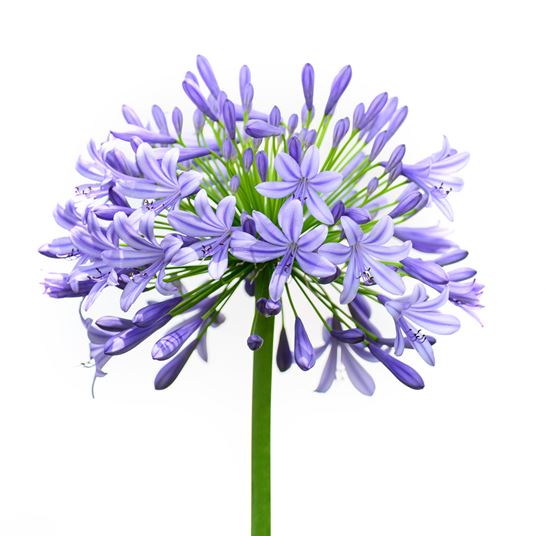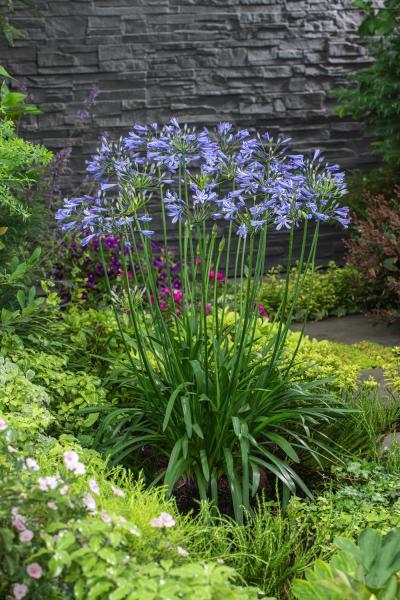Unleashing the Secret to Effective Agapanthus Cultivation: Tips and Techniques for a Flourishing Garden
In the world of horticulture, cultivating agapanthus efficiently needs a tactical technique that includes different aspects of plant care. With cautious attention to information, one can open the keys to nurturing these spectacular blossoms, resulting in a yard that flourishes with elegance and vibrancy. By recognizing the subtleties of agapanthus cultivation, one can create a setting where these plants flourish and grow generously. In the following conversation, we will check out essential ideas and methods that will guide you in the direction of a flourishing agapanthus yard, offering insights right into best methods, soil problems, sprinkling methods, and much more.
Planting Agapanthus: Ideal Practices
When planting Agapanthus, correct soil preparation is necessary for ensuring successful development and advancement of these lovely flowers. Agapanthus, typically referred to as Lily of the Nile or African lily, grows in well-draining soil with a slightly acidic to neutral pH degree - Agapanthus. Prior to planting, it is vital to amend hefty clay dirts with organic matter such as garden compost or peat moss to boost drain and give necessary nutrients for the plants
To grow Agapanthus, select a location that receives full sunshine to partial color, as this will certainly advertise healthy and balanced development and abundant flowering. Dig a hole two times the size of the plant's root sphere and position the Agapanthus at the same depth it was previously growing. Delicately backfill the hole with soil, pushing down strongly to eliminate any kind of air pockets around the origins.
Water the freshly grown Agapanthus thoroughly and remain to keep the dirt equally wet, particularly during the plant's active expanding period. Agapanthus. Using a balanced fertilizer once a month can further support the plant's development and flowering. By complying with these finest methods for planting Agapanthus, you can produce a sensational display of these fascinating blossoms in your yard
Perfect Dirt Issues for Agapanthus
For ideal growth and flowering success of Agapanthus plants, making certain the soil problems are optimal is crucial. Agapanthus chooses soil that is abundant in nutrients, so integrating a balanced fertilizer throughout the growing period can promote healthy and balanced development and vivid blooms.

Watering and Fertilizing Tips
To make certain healthy and balanced development and dynamic blooms, correct watering and feeding methods are important for effective Agapanthus growing. Agapanthus plants benefit from routine watering, particularly during the expanding period.
When it concerns feeding Agapanthus, a balanced plant food with equal components nitrogen, phosphorus, and potassium can be used in the spring to advertise healthy and balanced growth and flowering. Slow-release fertilizers are ideal for providing nutrients progressively over a prolonged duration. Stay clear of over-fertilizing, as this can cause too much foliage development at the expense of flowers.
Additionally, including organic issue like compost into the dirt can enhance nutrient degrees and enhance soil framework, aiding in the overall health and wellness of the Agapanthus plants. By following these watering and feeding tips, garden enthusiasts can guarantee their Agapanthus plants thrive and produce spectacular display screens of flowers.
Trimming and Deadheading Methods
Correct trimming and deadheading techniques play an essential duty in preserving the wellness and looks of Agapanthus plants, complementing the crucial practices of watering and feeding for successful farming. Pruning Agapanthus entails eliminating invested flower heads, dead or yellowing fallen leaves, and overall shaping of the plant to promote much better development. Deadheading, the process of getting rid of discolored flowers, not just enhances the plant's appearance yet also motivates more flowering.
When deadheading Agapanthus, it is suggested to snip off the flower stem at the base using sharp, clean shears. This procedure reroutes the plant's power from seed production back into origin and vegetation growth, advertising a much healthier and more robust plant. Routine deadheading can expand the flowering duration of Agapanthus and prevent self-seeding, which can result in overcrowding.
In terms of trimming, Agapanthus normally advantages from a light trim after blooming to clean the plant and encourage fresh growth. Cutting back the spent blossom stems and getting rid of any broken or dead foliage helps maintain the plant's vitality and overall appearance. Nonetheless, it is vital to prevent cutting into the crown of the plant, as this can compromise its health.

Protecting Agapanthus From Vermins and Diseases
Carrying out effective pest and condition monitoring techniques is essential to safeguarding the wellness and vitality of Agapanthus plants in cultivation. Agapanthus are normally hardy plants, yet they can still succumb to various parasites and illness if not appropriately taken care of. One typical insect advice that influences Agapanthus is the Agapanthus borer, a caterpillar that tunnels right into the plant, causing damages to the blossoms and leaves. To avoid problems, routine examination of the plants is necessary. If borers are discovered, they can be by hand eliminated, or insecticidal soap can be utilized as a control measure.
In enhancement to pests, Agapanthus are at risk to diseases such as root rot and fungal leaf places. These issues can typically be avoided by making sure proper water drainage and avoiding overwatering. Affected parts of the plant ought to be immediately eliminated to prevent further spread if indications of illness show up. Fungicides might also be utilized as a therapy action, complying with the producer's directions meticulously. By remaining vigilant and dealing with bug and illness problems immediately, garden enthusiasts can help their Agapanthus flourish and thrive.

Final Thought
To conclude, effective cultivation look at this web-site of agapanthus requires correct planting strategies, perfect dirt conditions, ample watering and fertilizing, routine trimming and deadheading, and protection from diseases and bugs. By following these tricks and suggestions, gardeners can make sure a prospering garden loaded with gorgeous agapanthus flowers. Agapanthus. Keep in mind to keep consistent care and attention to detail to promote the wellness and long life of these spectacular plants
When growing Agapanthus, proper soil preparation is necessary for making certain successful growth and growth of these beautiful flowers.Water the recently planted Agapanthus thoroughly and continue to keep the soil evenly moist, especially during the plant's active expanding season.For ideal development and flowering success of Agapanthus plants, making sure the dirt conditions are suitable is critical. When hair transplanting or planting Agapanthus, ensure the dirt is well-prepared to supply the necessary structure for the plants to develop themselves successfully. One common pest that impacts Agapanthus is the Agapanthus borer, a caterpillar that tunnels right into the plant, creating damages why not try these out to the flowers and leaves.
Comments on “Typical Agapanthus Problems and How to Address Them”